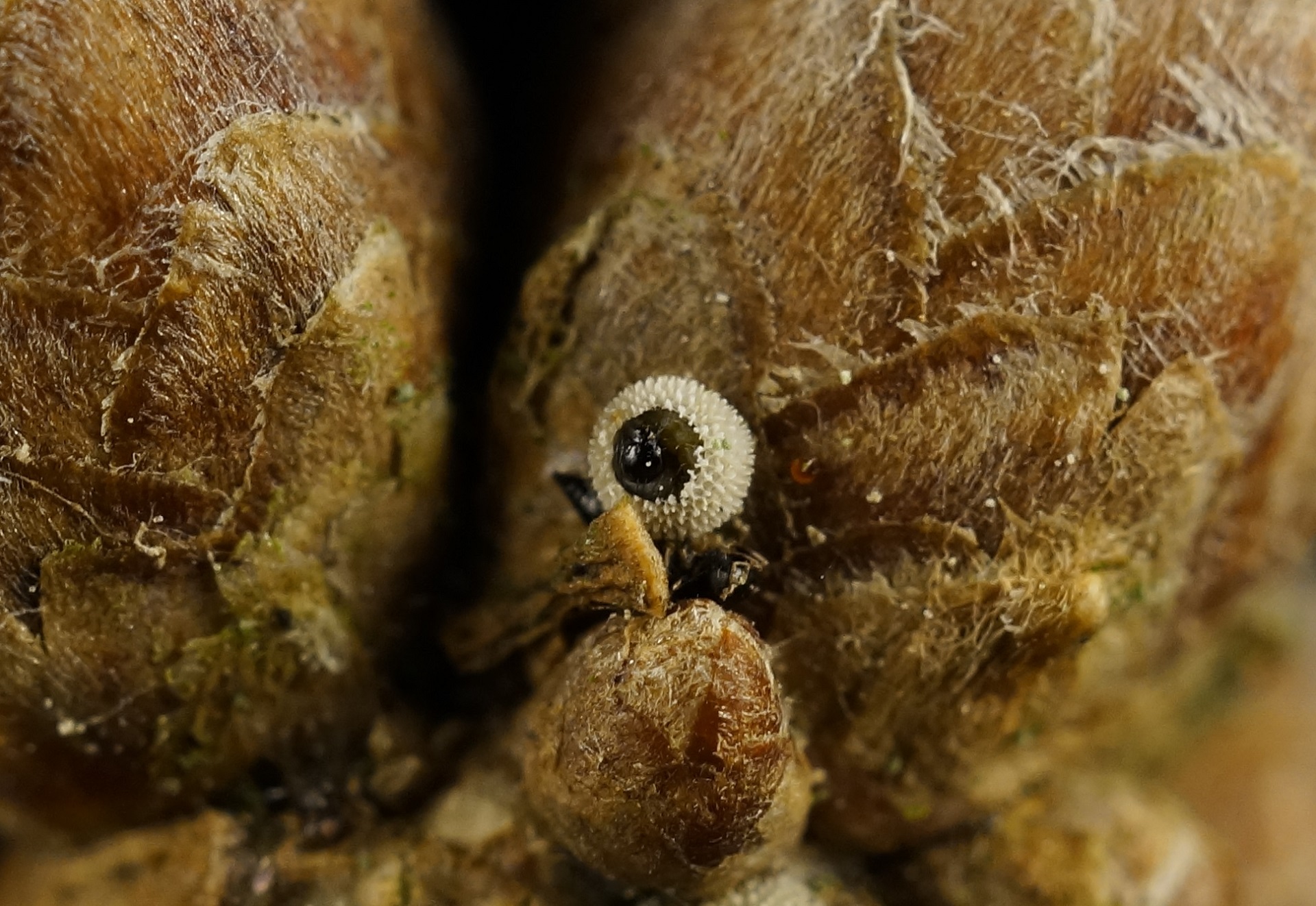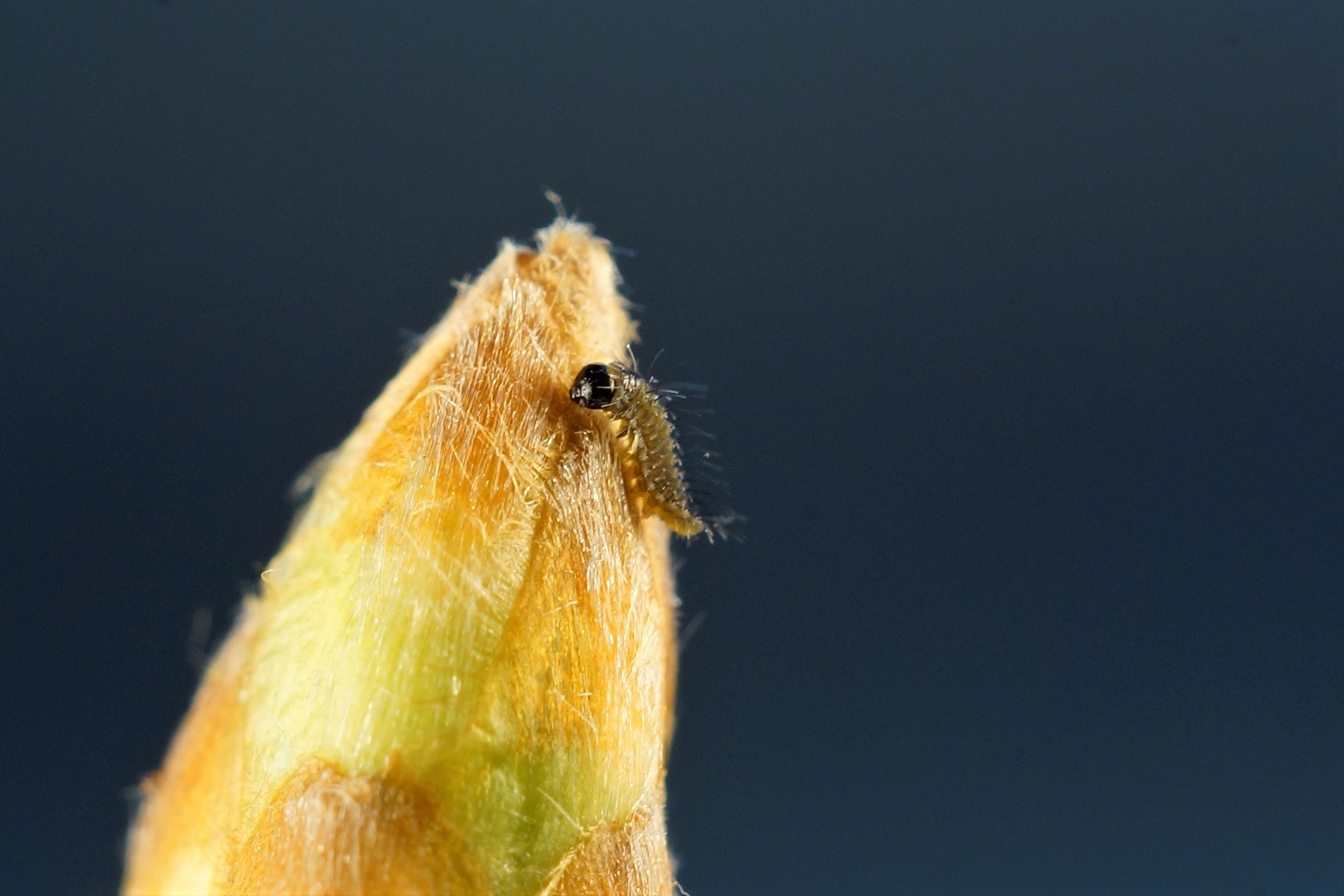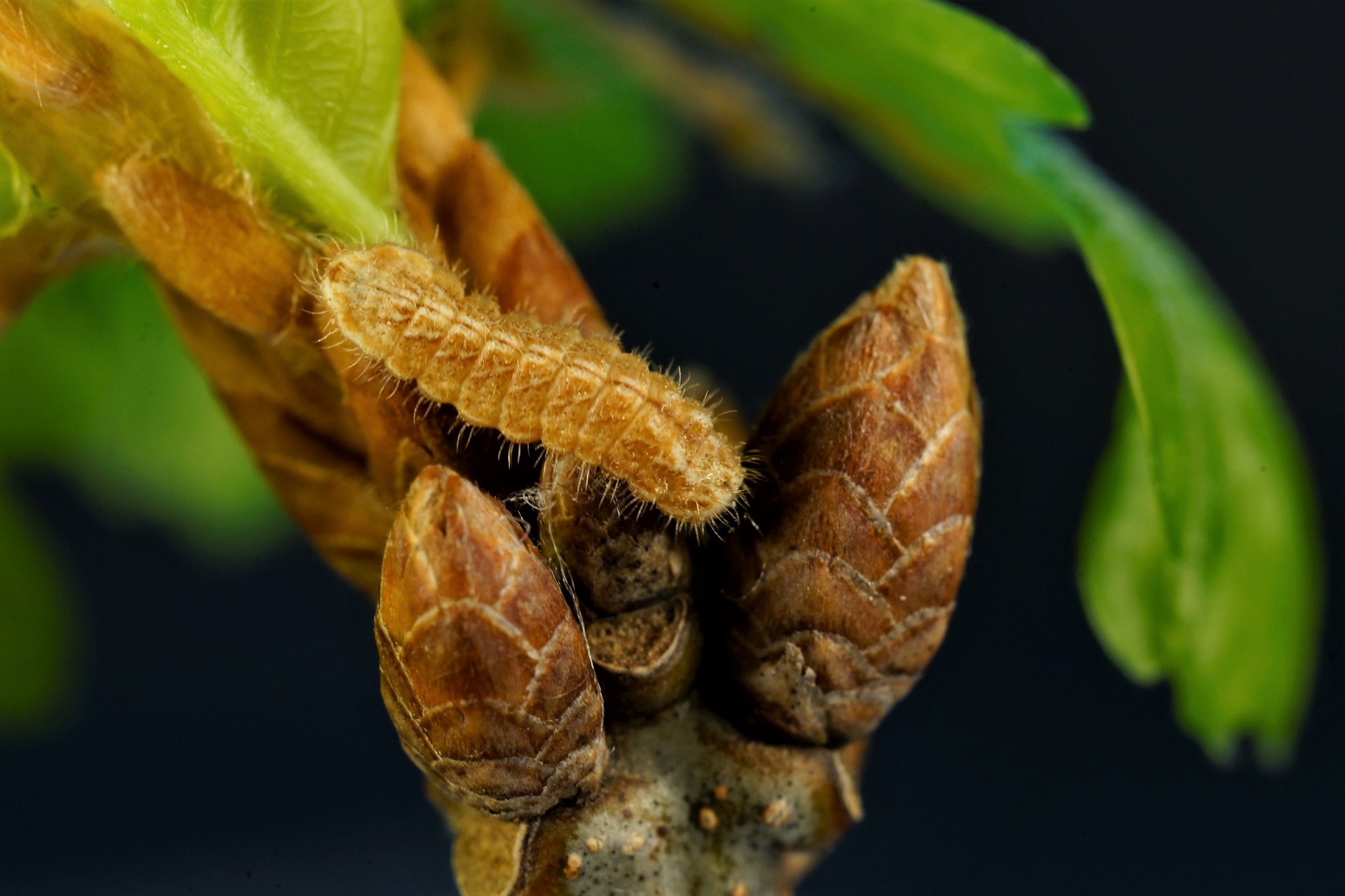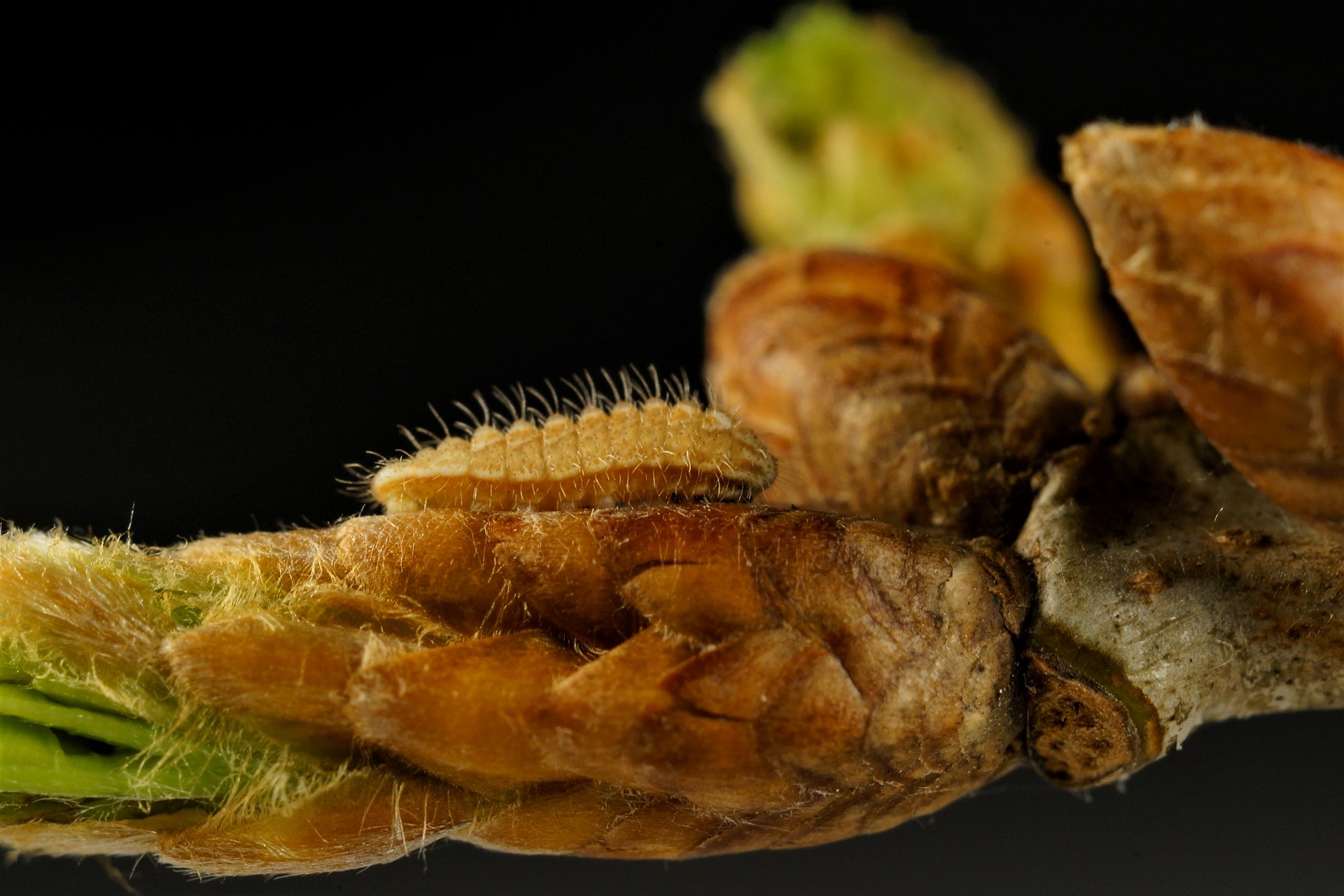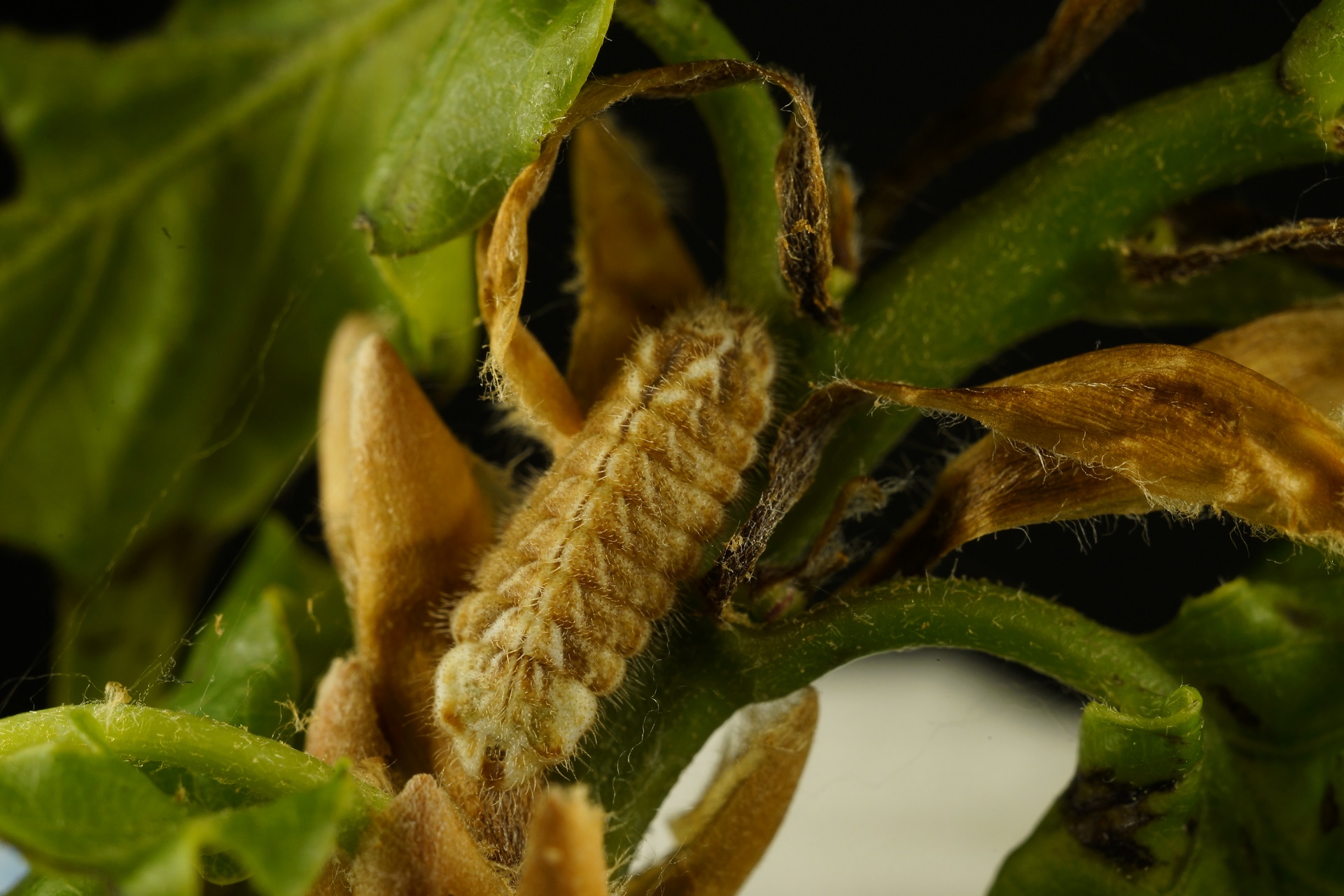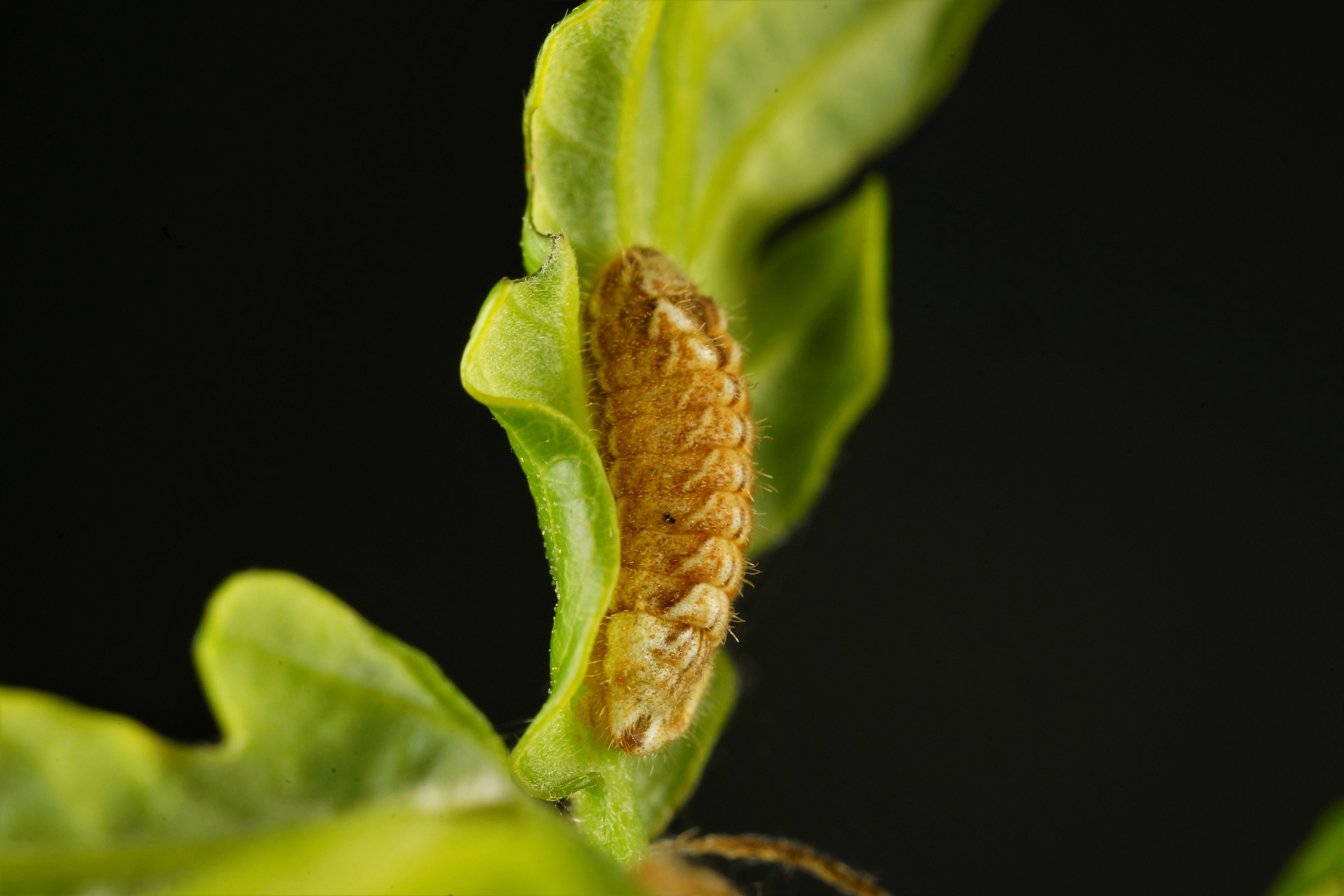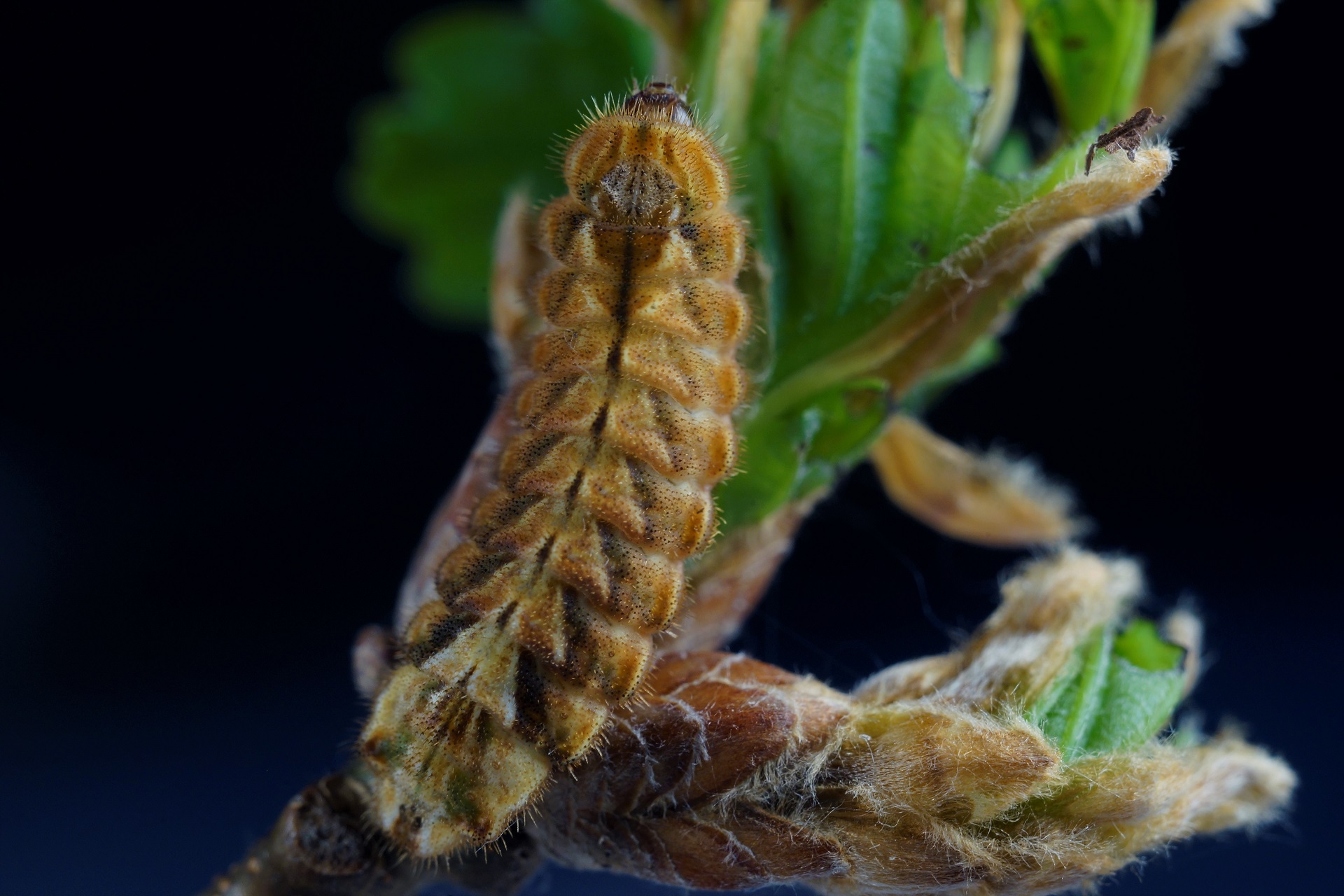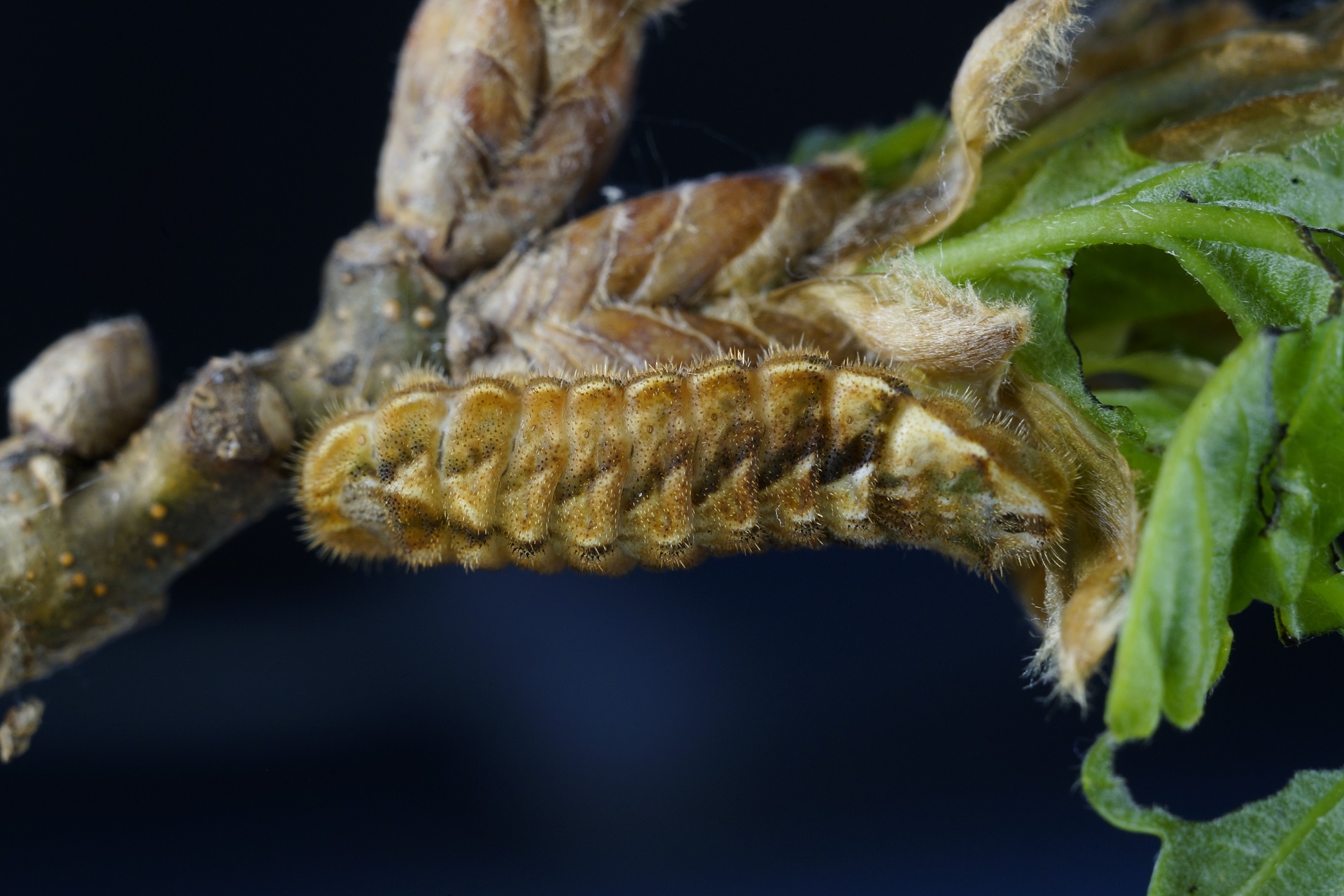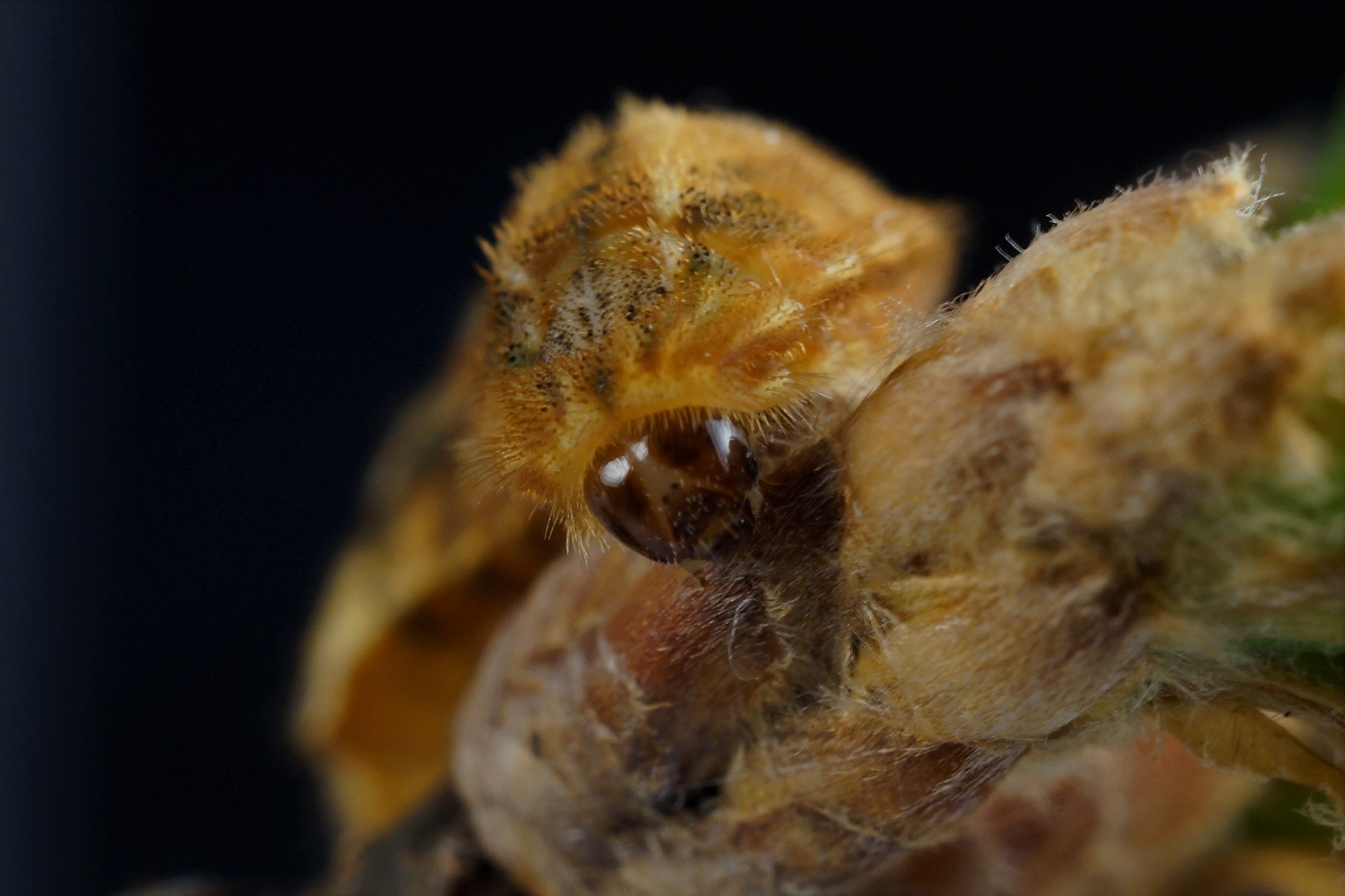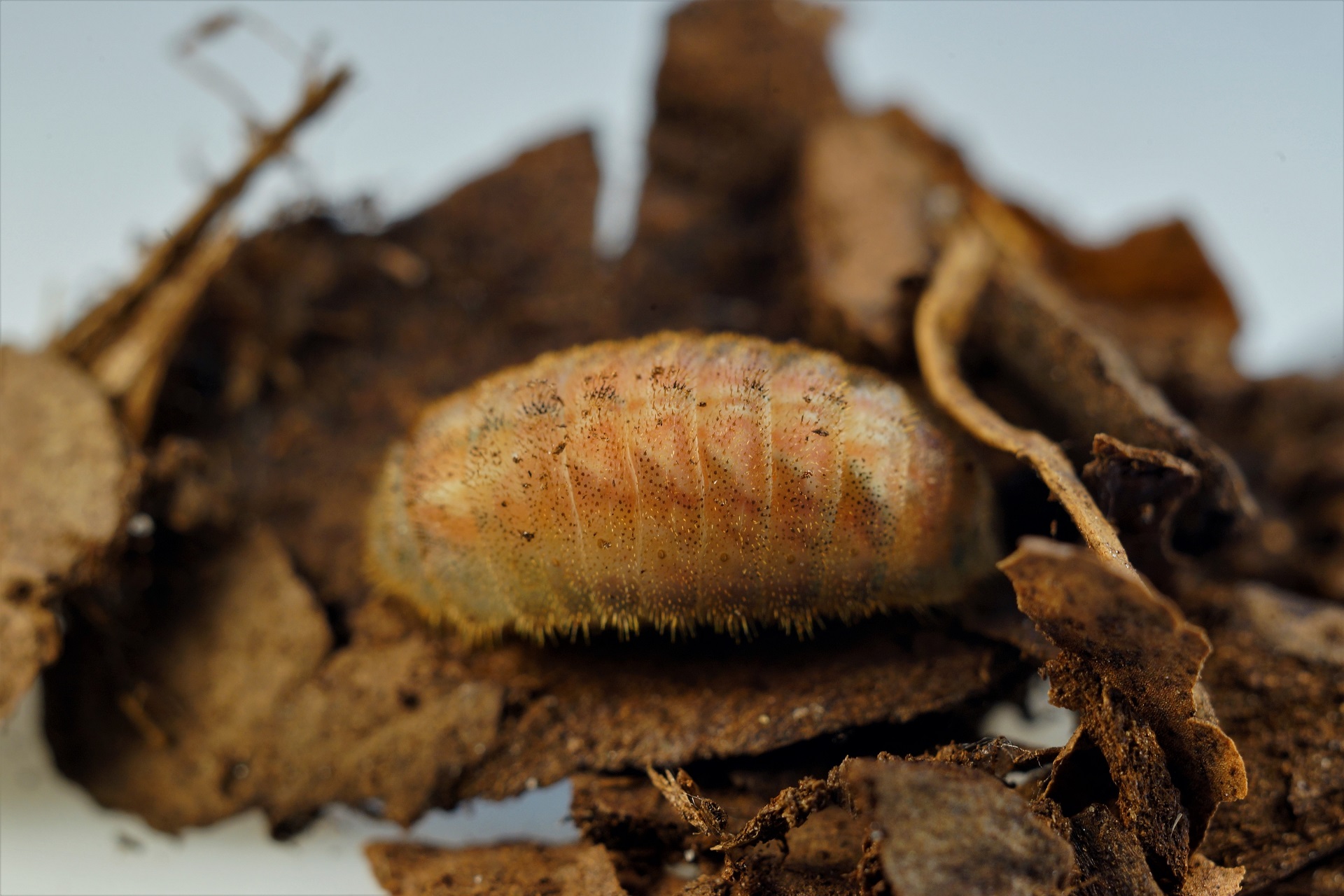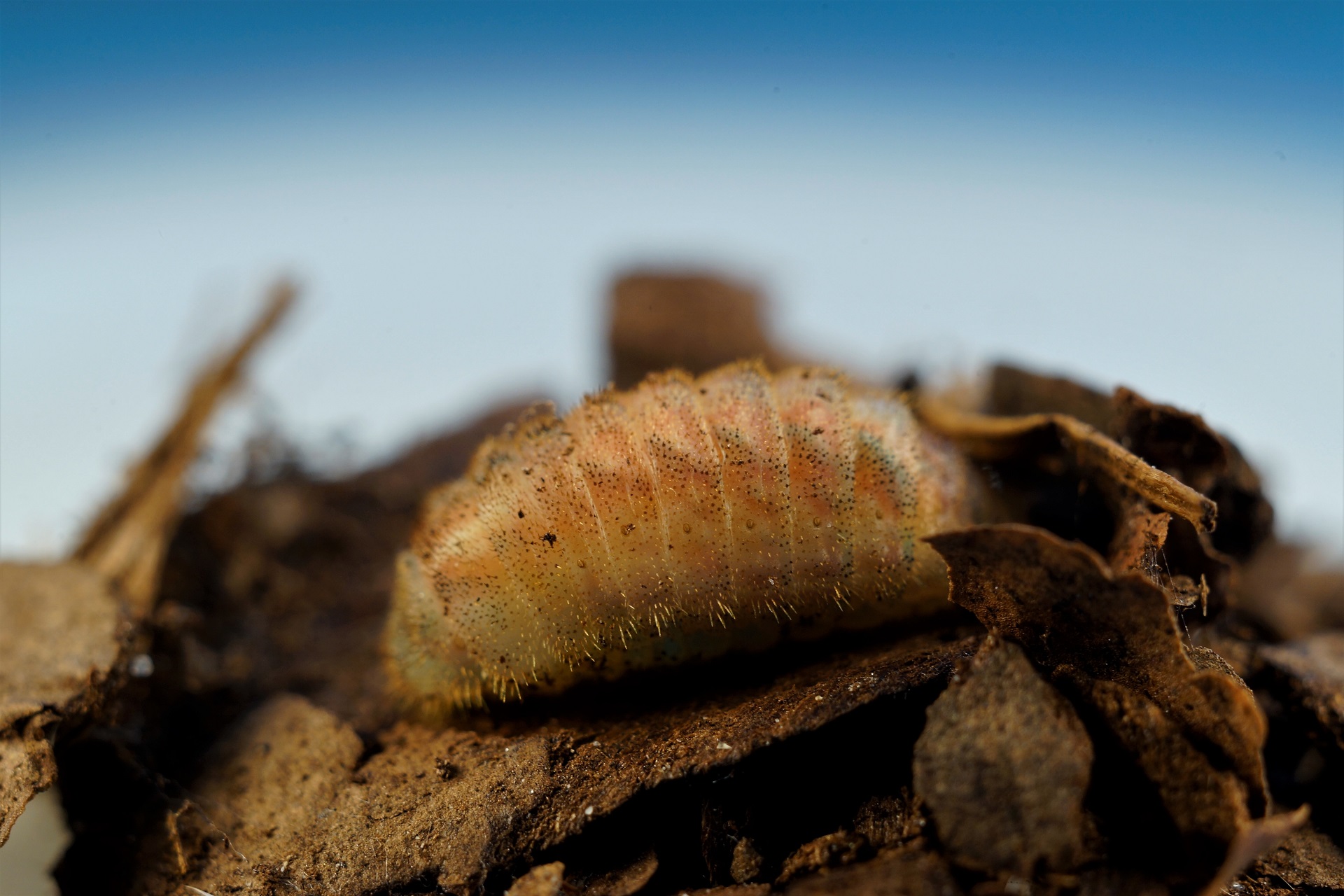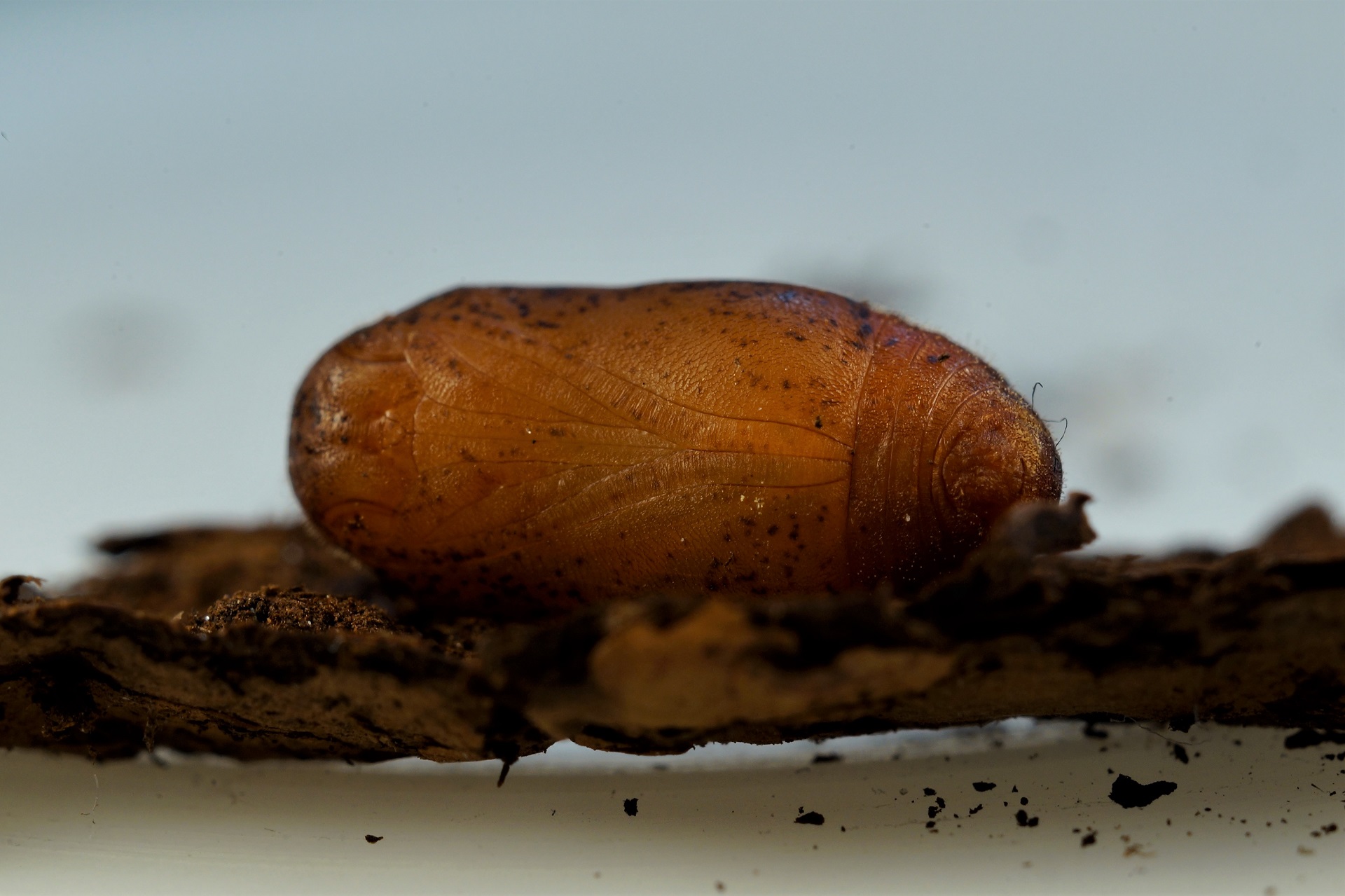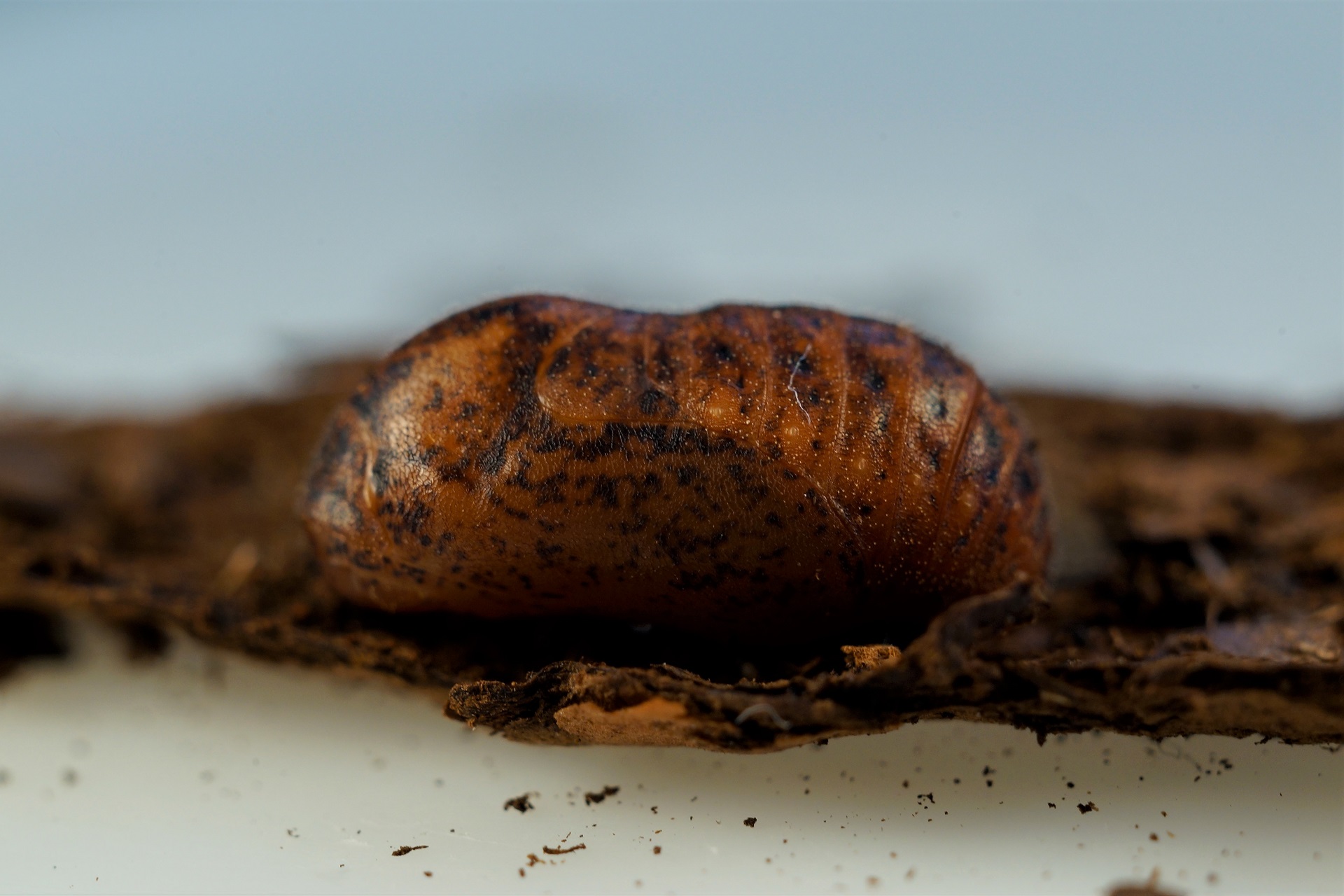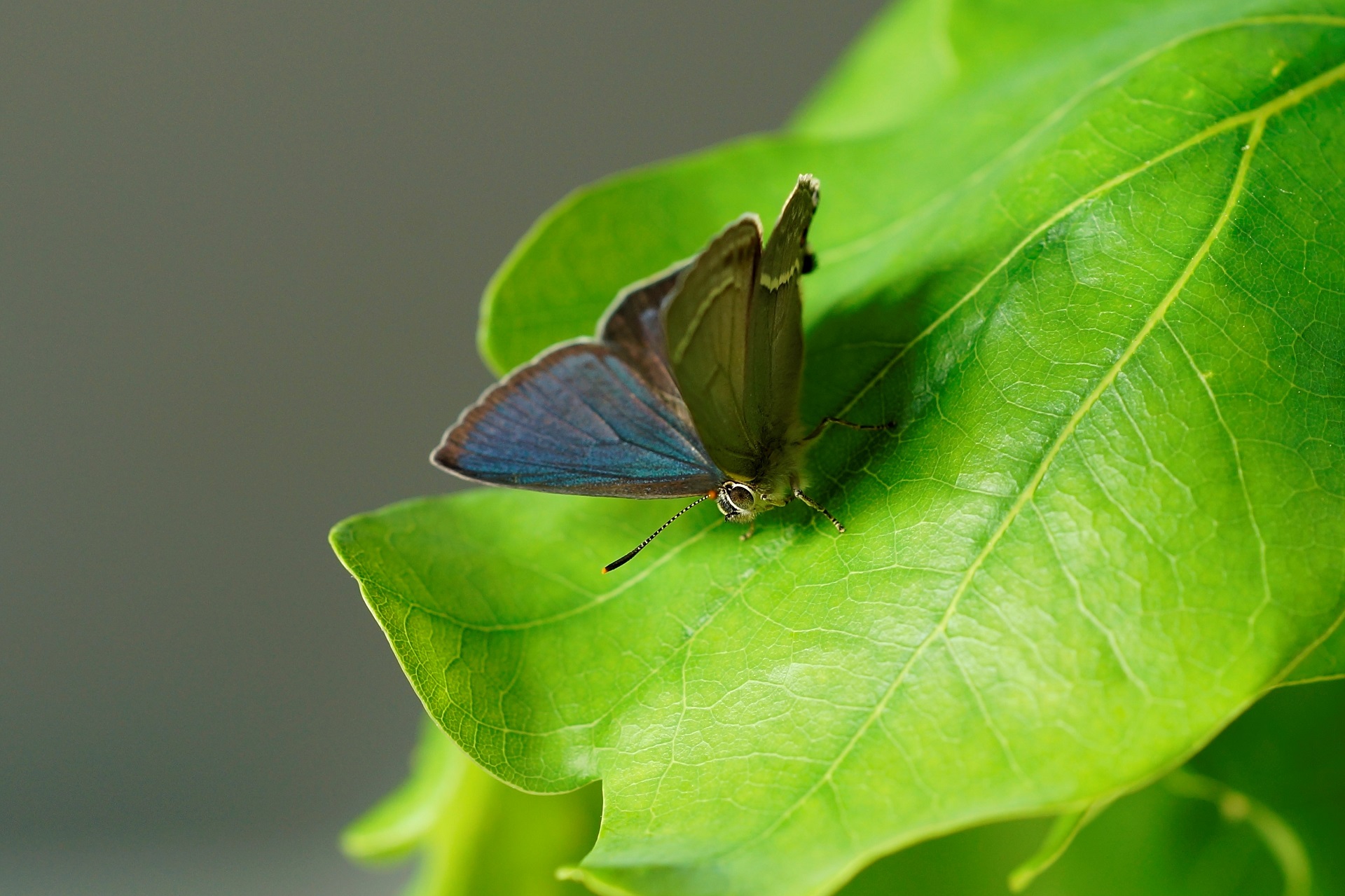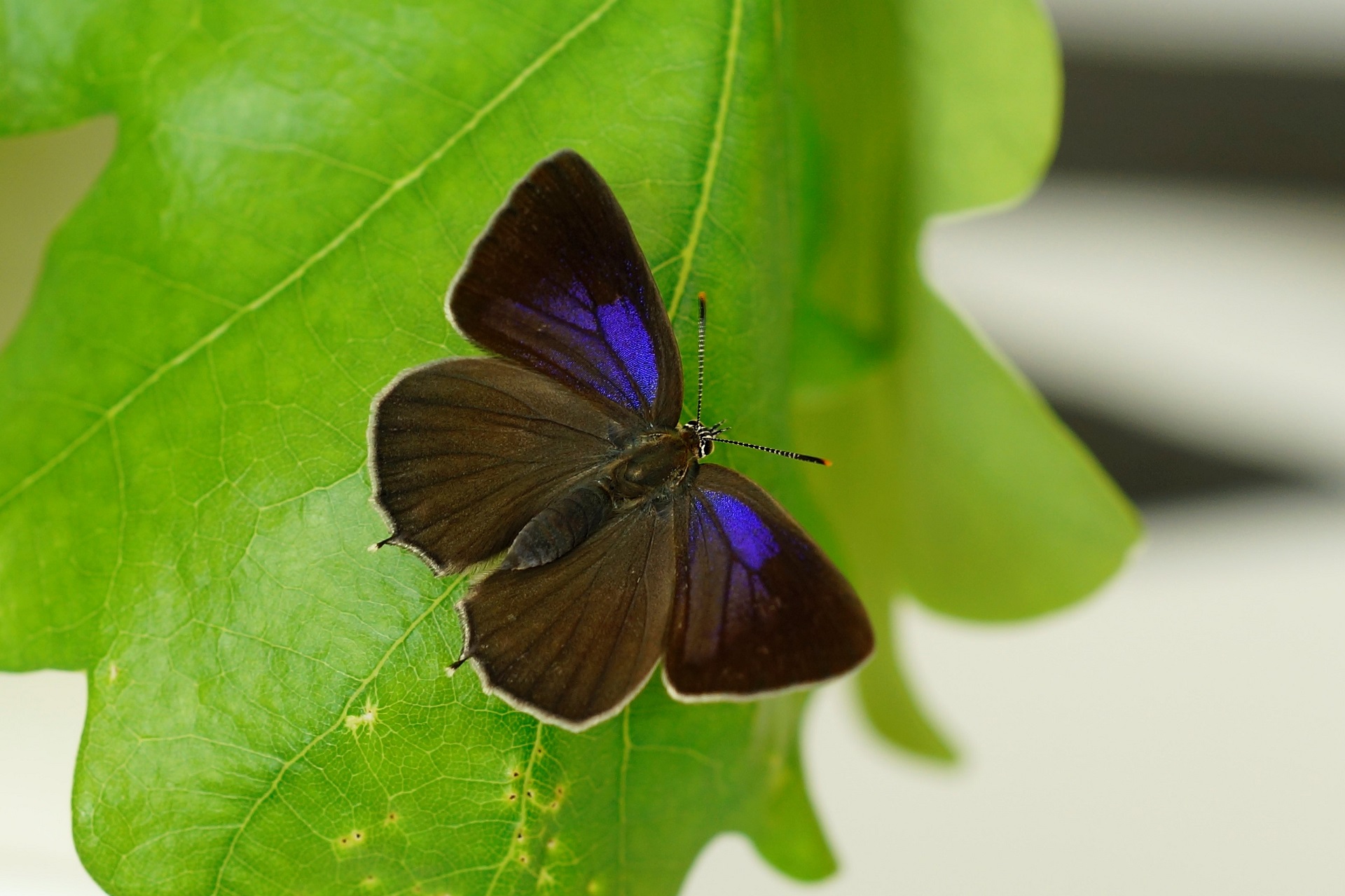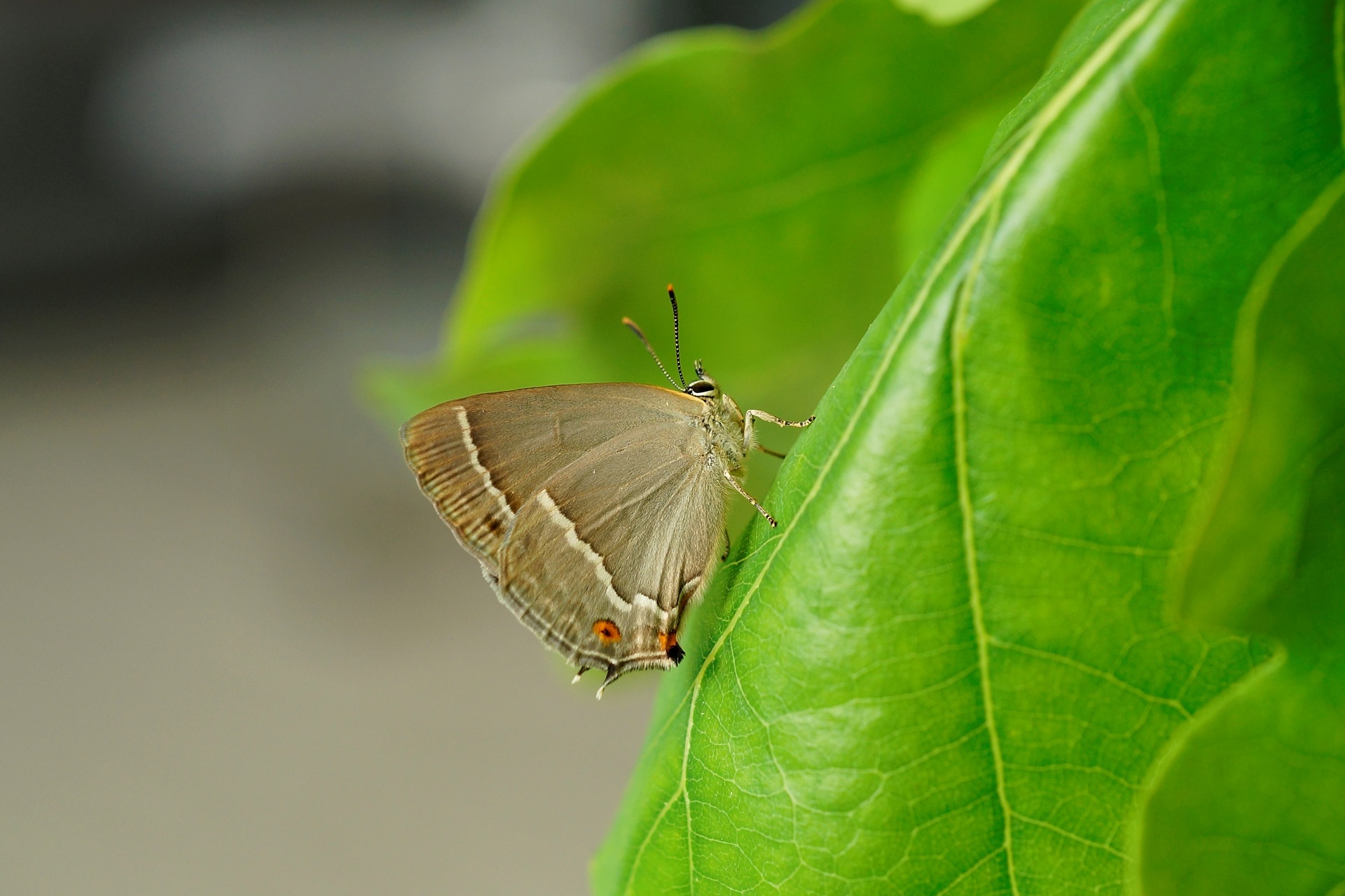Favonius quercus
Hostplant: Quercus spp. of which only Quercus rubor and Q.petraea grows naturally in Norway. I used Q.petraea in my breeding.
Lifecycle and behavior: The female lay her eggs at the base of leaf buds, usually on the underside and preferably on the bigger buds. They are easily found if looking closely in the right places. I gathered some eggs during late winter and kept them in the fridge until spring. When removed from the fridge the eggs hatched after 2 days in room temperature. The young larva burrows into the sprouting leaf buds and stays there until there is no food left. Usually they have already molted once when they come out of the bud. As they grow bigger, they eat the whole leaves. The whole larval stage lasted about 3 weeks, and the larva molted 3 times. The pupal stage lasted about 3 weeks as well. The adults are on the wing usually in July in one generation and spends most of their time high up in the canopy. The larva hibernates inside the eggshell and hatches early in the spring the following year.


